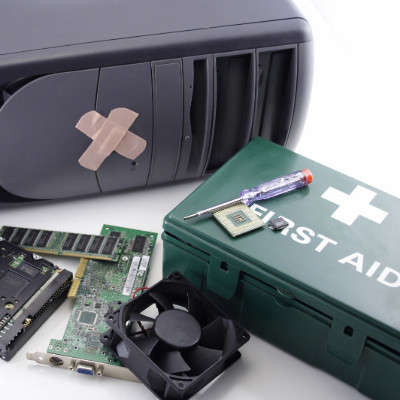The CIO or Chief Information Officer of any organization has a lot of pressure on them to get their organization’s technology right. Not only do they need to put strategies in place that will help the organization prosper; they need to take the brunt of the heat when these IT initiatives don’t work out in the way they forecast them to. A lot of their job is to say yes when their best instinct is to say no. Today, we will look at three of the technologies that today’s CIOs are green-lighting.
Argentum IT LLC Blog
As necessary as it is, business technology tends to be expensive, especially when things go wrong. Historically, these costs took the form of capital expenditures, which meant they were inherently expensive and unpredictable by nature.
This is precisely why it is so important to shift your business IT to an operating expense. Let’s explore why this is the case and how to implement this change.
Think of a good data backup system as insurance for your digital assets. You hope you never need it, but you'll be incredibly grateful it's there if something goes wrong. This month, we're going to explore the three key parts of any up-to-date data backup system and how we can use the newest technology to make backing up your data as smooth and easy as possible.
Your business lives and dies by the strength of its network. If it’s not running well, your entire organization will feel it, and it could have serious implications for operations. You might end up with sluggish software or data transfers, among other issues. Here are some of the common holdups on your network that might be holding your business back.
As the water cooler whispers about artificial intelligence get louder, workers are actively becoming worried about the status of their jobs. The idea of robots taking jobs can sound alarming, but knowledge is power. By understanding how AI works and what it can do for a business, employers and employees alike can gain some perspective and peace of mind.
You see it everywhere, again and again: how much return an investment into proper business technology will bring, with little to no context behind these claims. We want to fix that.
Let’s examine why so much information about modern IT options can be less than helpful, and see if we can’t clarify what it means. Simplifying tech for the businesses we work with is one of our primary goals, after all.
Technology is a big deal for any business, but for small businesses, keeping pace isn't just a good idea; it's becoming essential to the survival and success of the whole endeavor. Every instant gratification and falling behind can have a real effect on an organization’s ability to support their offerings.
Growing your business means making smart choices, and that definitely includes getting the right technology. Finding the right tech can often feel like a balancing act: you need powerful tools to compete and grow, but you also need to be mindful of your budget.
At Argentum IT, serving businesses right here in Kentucky and Southern Indiana, we help you find that sweet spot where your tech investments truly support your goals without unnecessary costs.
Robust IT tools and services are no longer a luxury, but the very lifeblood for organizations of every size. They provide the essential direction, unwavering stability, and seamless connectivity required not just to survive, but truly thrive in an increasingly digital world.
That said, the questions remain: what exactly constitutes these pivotal "IT tools and services," and more importantly, why should they take a top spot on your business priorities?
While it’s the longest-running joke in the world of IT, the question “Have you tried turning it on and off again?” is still an important one to consider when things are going awry. There’s a good reason why it’s such well-known advice, too: turning your device off can help solve a significant amount of technical issues. Why is this the case, and what can you learn from it?
Over time, you might add new technology solutions to your infrastructure to solve specific problems. Before you know it, you might have an overwhelming amount of technology that keeps your business operational. This issue—tech sprawl—can hold your business back from efficient operations, but don’t worry… we have a solution for you.
We’ve all heard it, perhaps even rolled our eyes at it: “Have you tried turning it off and on again?” This seemingly simplistic question has become a running gag in the world of IT support. But beneath the humor lies a fundamental truth: rebooting a device is often the most effective first step in resolving a surprising number of technical glitches.
We understand that, although it might sound elementary, this advice is based on solid technical principles.
If your business technology setup is driving you nuts, you’re not alone. Many business owners and managers have endless gripes about the technology they use for their business. It could be that your Wi-Fi is crawling along and not allowing for productive Internet speeds, your software feels like it was developed for Windows Vista, or you’re constantly wondering how you are going to keep your data safe. Whatever the case, it can be fixed. In today's blog, we’ll go into how to rebuild your IT plan from scratch.
Remember buying software on disks and installing it, computer by computer? Thankfully, those days are long behind us. Today, Software as a Service (SaaS) offers powerful advantages, especially for small and medium-sized businesses.
Let’s explore how you can benefit from these subscription-based tools.
Technology is no longer just a support function for a business, it's a critical driver of business performance, security, and competitiveness. As systems age and newer solutions are implemented, the need to evaluate and upgrade your technology becomes important. While it’s easy to maintain the mindset of reactive maintenance, relying on outdated technology can quietly hinder growth and expose your organization to significant risks.
Running a small or medium-sized business means juggling countless priorities. You're focused on your customers, team, and bottom line… but what about the technology that powers it all?
Often overlooked, your IT infrastructure is far more than just the computers on desks. It's the complex web of network equipment, essential software subscriptions, cloud services, and even the personal smartphones and tablets your employees use for work. Keeping this entire ecosystem running smoothly and securely is a significant challenge for many SMBs.




















